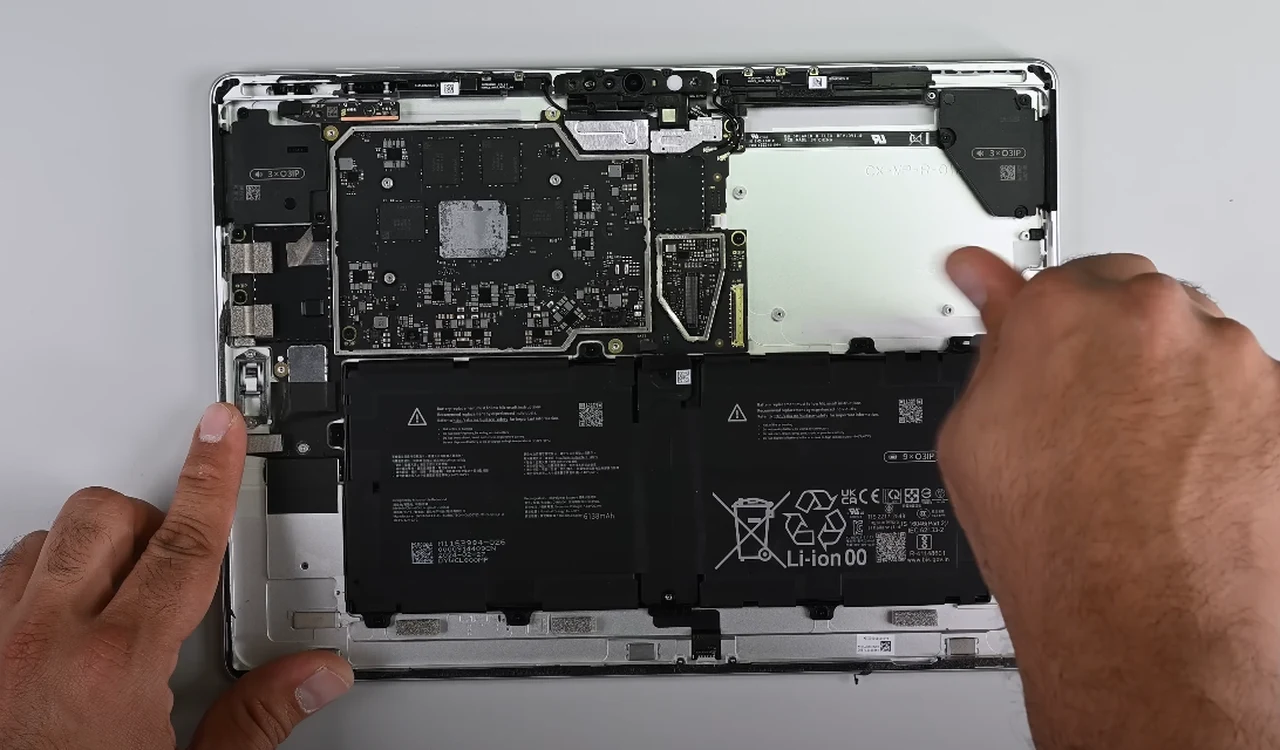Microsoft’s latest offerings, the Surface Pro 11 and Surface Laptop 7, have undergone rigorous teardowns by iFixit, revealing a significant shift in the company’s approach to hardware design. These devices showcase notable improvements in repairability and modularity, making them more user-friendly and serviceable. The adoption of ARM-based Qualcomm Snapdragon X chipsets further enhances their performance and efficiency, marking a groundbreaking development in the world of Windows PCs.
Key Takeaways :
The Surface Laptop 7 teardown highlights several noteworthy features that enhance its repairability:
- Straightforward access to internals through the use of screws and magnets
- Clearly labeled components and screw types, simplifying the repair process
- Upgradeable M.2 storage, allowing users to extend the device’s storage capacity
- Modular fan and thermal management system for easier replacements
- While the main board removal presents some challenges, the overall design assists easier repairs
Similarly, the Surface Pro 11 teardown reveals its own set of repairability enhancements:
- Accessible M.2 storage without the need for full disassembly
- While the screen adhesive and thermal assembly pose some challenges, the overall design is more repair-friendly
- Easy removal of battery and speakers, enhancing repairability
- Modular camera and button boards, simplifying repairs
The transition from traditional x86 architecture to ARM-based chipsets is a testament to Microsoft’s commitment to innovation and staying competitive in the market. The Qualcomm Snapdragon X chipset, found in both the Surface Pro 11 and Surface Laptop 7, delivers robust performance that rivals Apple’s M1 silicon. This move not only brings Microsoft’s devices up to par with industry standards but also sets the stage for future advancements in processing power and energy efficiency.
Surface Pro 11 and Surface Laptop 7 Teardowns
One of the most striking aspects of the Surface Pro 11 and Surface Laptop 7 is their improved repairability. Microsoft has taken significant strides in designing these devices for easier disassembly and component accessibility. Users and technicians alike will appreciate the ability to replace batteries, storage, and other key components with greater ease. This user-friendly approach not only simplifies the repair process but also contributes to the longevity and sustainability of the devices.
Here are a selection of other articles from our extensive library of content you may find of interest on the subject of technology teardowns.
In a commendable move towards transparency, Microsoft has made service manuals for both the Surface Pro 11 and Surface Laptop 7 publicly available from launch. This decision empowers users and technicians to perform repairs with confidence and accuracy, armed with the necessary information and guidance. The availability of service manuals further underscores Microsoft’s commitment to repairability and user empowerment.
The impact of these repairability improvements is evident in the provisional repairability scores assigned by iFixit. Both devices have received an impressive score of 8 out of 10, reflecting the significant strides made in their design and accessibility for repairs and upgrades. These high scores are a testament to Microsoft’s efforts in creating devices that are not only high-performing but also user-friendly and maintainable.
The Future of Repairable and Modular Devices
The Surface Pro 11 and Surface Laptop 7 represent a significant leap forward in Microsoft’s approach to hardware design. By prioritizing repairability and modularity, the company is setting a new standard for the industry. These advancements not only enhance the user experience but also contribute to the longevity and sustainability of the devices, reducing electronic waste and promoting a more environmentally conscious approach to technology.
As consumers become increasingly aware of the importance of repairability and the right to repair, Microsoft’s efforts in this direction are both timely and commendable. The combination of ARM-based chipsets, user-friendly design, and accessible service manuals positions these devices as trailblazers in the realm of maintainable and serviceable hardware.
Looking ahead, it is clear that the future of technology lies in creating devices that are not only high-performing but also repairable and modular. Microsoft’s Surface Pro 11 and Surface Laptop 7 serve as shining examples of this philosophy, paving the way for a new era of user-centric design. As other manufacturers take note of these advancements, we can expect to see a growing trend towards more maintainable and serviceable devices across the industry.
Video Credit: Source
Filed Under: Hardware, Top News
Latest TechMehow Deals
Disclosure: Some of our articles include affiliate links. If you buy something through one of these links, TechMehow may earn an affiliate commission. Learn about our Disclosure Policy.
